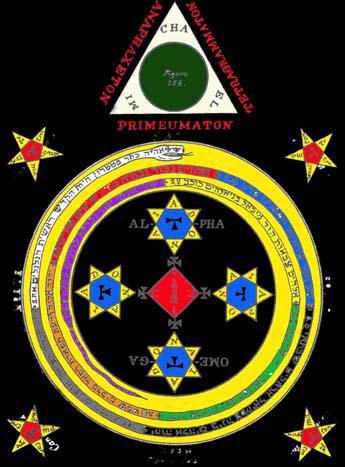Ars Goetia
(Revision as of 12:26, 19 Nov 2005)
| Goetic Demons
|
|---|
|
The Ars Goetia (Latin, probably: "The Howling Art"), often simply called the Goetia, is the first section of the 17th century grimoire Lemegeton Clavicula Salomonis, or The Lesser Key of Solomon. Much of the text appeared earlier, with some material dating to the 14th century or earlier.

It contains descriptions of the seventy-two demons that King Solomon is said to have evoked and confined in a bronze vessel sealed by magick symbols, and that he obliged to work for him. It gives instructions on constructing a similar bronze vessel, and using the proper magic formulae to safely call up those demons. The operation given is complex, and includes much detail. The 'howling' of the title is believed to refer to the incantations made by the conjuror. The Ars Goetia differs from other goetic texts in that the entities summoned are to be compelled into obedience, rather than asked for favors.
The Ars Goetia assigns a rank and a title of nobility to each member of the infernal hierarchy, and gives the demons' 'signs they have to pay allegiance to', or seals. The lists of entities in the Ars Goetia correspond (to high but varying degree, often according to edition) with those in the Steganographia of Trithemius, circa 1500, and Johann Weyer's Pseudomonarchia Daemonum an appendix appearing in later editions of his De Praestigiis Daemonum, of 1563.
A revised English edition of the Ars Goetia was published in 1904 translated by Samuel Liddell MacGregor Mathers, with an introduction by Aleister Crowley. It includes the Bornless Ritual, the seals of the spirits, their physical descriptions and actions. There are drawings done by Crowley for some of them. It has since become a relatively well-known book of magic (arguably, the most popular of the grimoires) and has even been featured in places like the graphic novel Promethea by Alan Moore.
Goetic Demons
The demons' names (see sidebar) are spelled differently in different extant copies of the Ars Goetia, as is common in texts of the period. Other spellings of the names are given in the articles concerning them.
References
- Wikipedia (2005). Ars Goetia (http://en.wikipedia.org/wiki/Ars_Goetia). Retrieved Nov 18, 2005
![[Main Page]](http://www.thelemapedia.org/images/logo.gif)